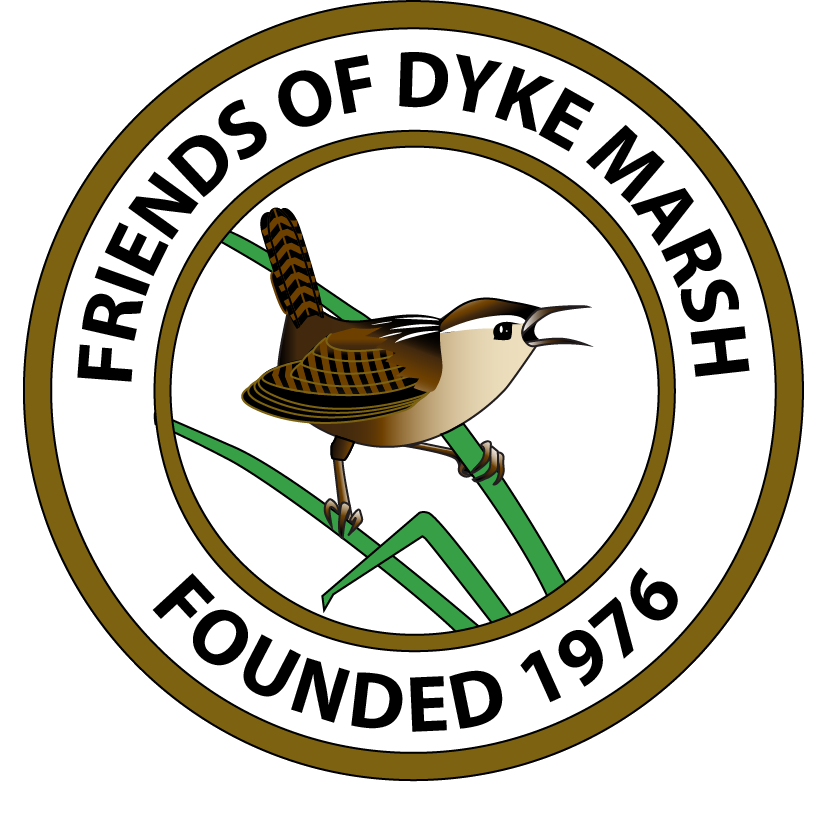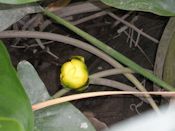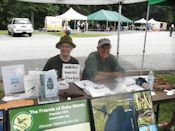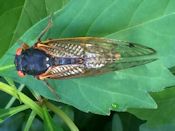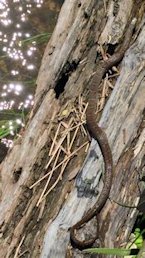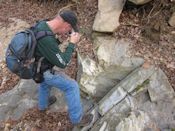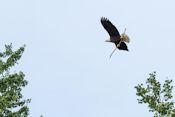On May 20, 2017, a class led by Joel Cohen, Audubon Naturalist Society, visited the Dyke Marsh Wildlife Preserve to study biodiversity. A common wetland plant in the marsh, spatterdock (Nuphar polyspala), was in bloom, sporting its bright yellow, golf-ball-like flower.
On May 20, 2017, FODM exhibited at the 20th annual Mason Neck Eagle Festival. Glenda Booth and Marc Ribaudo, pictured here, staffed the table in the afternoon; Ned Stone and Trudi Hahn, in the morning. A steady stream of youngsters made colorful birds at the FODM table and a “foxy” ranger visited.
On May 14, 2017, FODMers saw periodic cicadas, genus Magicicada, emerging in Dyke Marsh, moreso in west Dyke Marsh, but definitely on both sides of the George Washington Memorial Parkway.
Observers may see the insects’ shed nymphal skins at the base of trees. Unlike the cicadas that appear annually in Dyke Marsh (swamp, Robinson’s, Linne’s, scissor-grinder and others), the periodic cicadas appear much less frequently.
On May 14, 2017, FODMers observed several common or northern watersnakes (Nerodia sipedon sipedon) off both sides of the boardwalk. These snakes are more active on sunny days than on cloudy days and are known to mate near the water's edge on logs, over rocks or on branches. Their coloration helps them camouflage, but movement in the cattails may give away their presence.
On May 10, 2017, Rod Simmons spoke to an enthusiastic audience of 60 and explored the geology of the Washington area and how it gives rise to diverse natural communities, calling the Washington-Baltimore region “the most geologically and floristically diverse area in the eastern United States.” Rod is the Natural Resource Manager and Plant Ecologist for the city of Alexandria.
There is one active bald eagle nest in the Dyke Marsh Wildlife Preserve this spring, 2017, confirmed by a National Park Service biologist’s helicopter survey conducted before trees leafed out. Our fingers are crossed for some fledged young. Bald eagles that hatch in April in this area usually can fly and leave the nest in early June.
